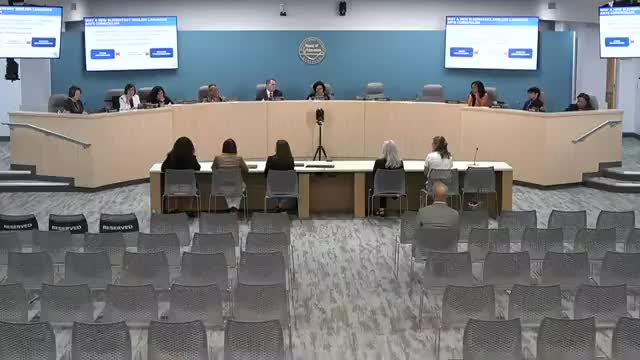Schools launch urgent literacy intervention for struggling students
September 14, 2024 | Montgomery County Public Schools, School Boards, Maryland
This article was created by AI summarizing key points discussed. AI makes mistakes, so for full details and context, please refer to the video of the full meeting. Please report any errors so we can fix them. Report an error »

In a recent government meeting, education officials discussed the ongoing challenges in literacy among elementary and middle school students, particularly focusing on the transition from third to fourth grade. The conversation highlighted the importance of identifying students who are struggling with reading and implementing targeted interventions to support their learning.
Officials emphasized the use of the DIBELS assessment for kindergarten through second grade and the MAP R assessment for grades three to five. These assessments are crucial for identifying students who require additional support, particularly those scoring below standard. Schools are mandated to administer DIBELS for students with low scores, allowing educators to tailor interventions based on individual needs. Progress monitoring occurs every two to four weeks, enabling educators to adjust strategies as necessary.
Concerns were raised about the overall literacy rates, with a reported 69.5% of students meeting literacy standards across K-12. Some officials questioned whether this figure might be inflated due to including students who have already passed state assessments, suggesting a need for more nuanced data in future strategic planning.
The discussion also touched on the variability in intervention strategies across schools, with some principals prioritizing literacy support more than others. This inconsistency raised alarms about equity in educational opportunities, prompting calls for a more standardized approach to interventions.
Engagement with parents was identified as a critical component of student success. Officials outlined efforts to provide resources for families, including online hubs with curriculum materials and regular communication about student progress. These initiatives aim to empower parents to support their children's learning at home.
Looking ahead, officials acknowledged the need for a \"command center\" approach to data analysis, where school leaders can collaboratively review student performance and strategize interventions. This model aims to ensure that all students receive consistent and effective literacy instruction, regardless of their school.
As the meeting concluded, there was a consensus on the urgency of addressing literacy challenges and the importance of a unified approach to support all students in achieving their educational goals.
Officials emphasized the use of the DIBELS assessment for kindergarten through second grade and the MAP R assessment for grades three to five. These assessments are crucial for identifying students who require additional support, particularly those scoring below standard. Schools are mandated to administer DIBELS for students with low scores, allowing educators to tailor interventions based on individual needs. Progress monitoring occurs every two to four weeks, enabling educators to adjust strategies as necessary.
Concerns were raised about the overall literacy rates, with a reported 69.5% of students meeting literacy standards across K-12. Some officials questioned whether this figure might be inflated due to including students who have already passed state assessments, suggesting a need for more nuanced data in future strategic planning.
The discussion also touched on the variability in intervention strategies across schools, with some principals prioritizing literacy support more than others. This inconsistency raised alarms about equity in educational opportunities, prompting calls for a more standardized approach to interventions.
Engagement with parents was identified as a critical component of student success. Officials outlined efforts to provide resources for families, including online hubs with curriculum materials and regular communication about student progress. These initiatives aim to empower parents to support their children's learning at home.
Looking ahead, officials acknowledged the need for a \"command center\" approach to data analysis, where school leaders can collaboratively review student performance and strategize interventions. This model aims to ensure that all students receive consistent and effective literacy instruction, regardless of their school.
As the meeting concluded, there was a consensus on the urgency of addressing literacy challenges and the importance of a unified approach to support all students in achieving their educational goals.
View full meeting
This article is based on a recent meeting—watch the full video and explore the complete transcript for deeper insights into the discussion.
View full meeting
